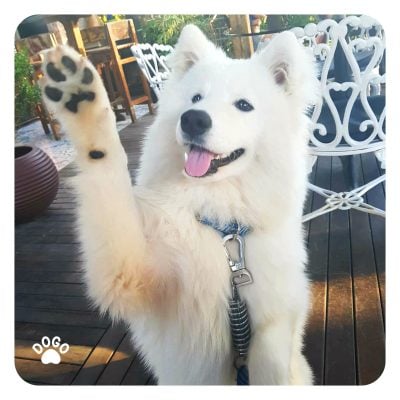All dog parents wish they could get into their beloved dog’s mind to understand what they are thinking. Even though it’s not possible we can get one step closer to it by interpreting canine body language. Have you ever gave a deep thought on why dog lifts their paw?
There are multiple reasons for this behavior. For example, dogs might lift their paws when they want to mark their territory. This behavior is common among male dogs, and they will lift their leg to urinate on objects like trees, signposts, and fire hydrants. Another reason why dogs lift their paws is that they might be trying to cool down. Dogs sweat through their paws, and when they are hot, they might lift their paws to expose them to cool air. Learning the subtle signs your pooch gives you through their body language is essential to understanding the pattern. We should look at the gestures our dogs make and consider what they are trying to communicate.
1. Your dog is injured
The first reason you should rule out is raising a paw due to an injury. If your dog suffers from a cut, muscle damage, a broken bone or there is an irritating surface like hot asphalt or salt sprinkling in the winter, they will lift the injured leg to minimize the pain. The behavior might be accompanied by other disturbing symptoms such as whining or shivering. If there are no visible signs of an accident on your dog’s body like bleeding and you’re unsure if the situation is serious, take your dog to the vet immediately. It’s always better to be safe than sorry.
2. Your dog is focused
The focused paw raise is common for hunting breeds like English Pointer, Beagle, English Spaniel, or Bloodhound. When the dog lifts their front leg, it means that they are fully focused on something and waiting for the perfect moment to start chasing the chosen object. This behavior is called “pointing,” and it’s a way for the dog to signal to its owner that there is something worth investigating. To encourage this behavior, owners can engage their hunting breeds in training exercises that involve searching for hidden objects or following scent trails. This will help the dog develop its natural hunting abilities and strengthen the bond between the dog and its owner. It’s important to note that not all hunting breeds exhibit this behavior and that the behavior can also be present in non-hunting breeds.
3. Your dog is anxious
If the paw is lifted by non-hunting dogs, it might signalize emotional states such as anxiety, fear or stress. It’s crucial to understand that anxiety and stress can have various causes, such as separation anxiety or fear of loud noises, and that the behavior should be addressed accordingly. Your pet may be facing an uncomfortable situation in which they feel insecure. When you notice your dog acting this way, try to take them out of the situation, take him outside, go for a walk, remove the trigger or distract your dog, so they don’t feel anxious by redirecting their ming to a play or tasty treats.
4. Your dog is intrigued
A paw lift can have a positive connotation as well. It might be an expression of curiosity and anticipation, often followed by a head tilt. Dogs use to do it when they are waiting for something good to happen, for example, when you’re talking to them holding their favorite toy in your hand or even better – when they are waiting for the delicious piece of your sandwich to land on the floor. They just can’t wait to get this yummy treato in their belly!
5. Your dog wants your attention
The other reason why your dog lifts their paw is that they most probably try to attract your attention. They may raise their front leg and put it on your knee. This will be accompanied by a tail wag and puppy eyes – all this to make you pet them or play with them. This behavior is especially common in breeds that are known for their affectionate and loyal personalities, such as Golden Retrievers and Labrador Retrievers. To encourage this behavior, owners can give their dogs plenty of affection, playtime, and attention throughout the day. This will help the dog feel more connected to its owner and less likely to engage in destructive or attention-seeking behaviors. They generally develop this behavior over time as your bond gets stronger.
Observe, analyze, interpret
It’s important to note that the context in which the behavior occurs is critical to understanding the behavior. Every dog is unique, and their behavior is shaped by their environment and experiences. Therefore, interpretation of your dog’s behavior should be preceded by precise observation and analysis of the context. Remember that every dog is unique with different personalities and experiences.
Are you interested in canine body language? Check out our other articles about dog tail wags or dog kisses.
[/fusion_text]



